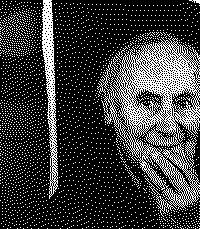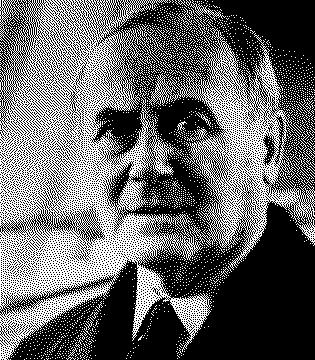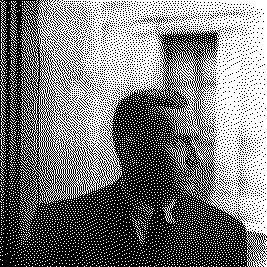Artists/Joan Miró
Fast Facts
Surrealist Master
Joan Miró was a prominent figure in the Surrealist movement, known for his imaginative, dreamlike paintings that combined abstract forms with whimsical, often biomorphic shapes. His work aimed to tap into the subconscious mind and evoke a sense of childlike wonder (The Art Story) (Tate).
Symbolic Language
Miró developed a unique symbolic language in his art, using recurring motifs like stars, moons, birds, and eyes. These symbols carried personal and universal meanings, creating a rich, layered visual vocabulary that distinguished his work (Guggenheim) (MoMA).
Influence of Catalonia
His native Catalonia profoundly influenced Miró's art, with the landscapes, folk art, and culture of the region often reflected in his use of color, form, and subject matter. The vivid, earthy tones and organic shapes in his work echo the natural beauty of his homeland (Guggenheim) (Tate).
Diverse Media
Beyond painting, Miró explored a wide range of media, including sculpture, ceramics, printmaking, and murals. His experimentation with different materials and techniques demonstrated his innovative spirit and contributed to his lasting influence on modern art (The Art Story) (MoMA).
Political Engagement
Miró's art also carried political undertones, particularly during the Spanish Civil War and World War II. His "The Reaper" (1937), created for the Spanish Pavilion at the Paris World Fair, and "Constellation" series reflected his response to the tumultuous events of his time, blending poetic imagery with a sense of resistance (Guggenheim) (The Art Story).
Later Works and Legacy
In his later years, Miró continued to innovate, creating large-scale public art projects and collaborating with younger artists. His work remains celebrated for its playful, dreamlike quality and profound impact on the development of abstract and Surrealist art (Tate) (MoMA).
Biography



Joan Miró i Ferrà, born on April 20, 1893, in Barcelona, Spain, emerged as a towering figure in the art world, known for his unique blend of surrealism, abstract art, and a personal style marked by a fascination with the unconscious mind.
His contributions span across painting, sculpture, and ceramics, leaving an indelible mark on 20th-century art. Miró's work is celebrated for its imaginative quality, combining abstract elements with fantastical creatures and scenarios drawn from his inner world. Despite facing ridicule in his early career, he persevered, driven by a deep contempt for conventional painting methods, which he viewed as a support for bourgeois society. This rebellious spirit led him to declare an "assassination of painting" in favor of disrupting established visual elements (Wikipedia).
Miró's journey into the arts was against the wishes of his family; initially, he pursued a career in business, enduring a nervous breakdown before committing himself entirely to art. His artistic foundation was laid at the art academy in Barcelona, where he was influenced by modern art movements and contemporary Catalan poets, a reflection of his deep connection to his Catalan heritage. His early years were characterized by experimentation within the realms of Fauvism and Cubism, drawing inspiration from figures like Vincent van Gogh and Paul Cézanne (Wikipedia) (The Art Story).
In 1920, seeking a more vibrant artistic community, Miró moved to Paris. Here, he found himself at the heart of the avant-garde, mingling with artists such as Pablo Picasso and Tristan Tzara. Despite the initial struggle to sell his work, his solo show in Barcelona in 1918 marked the beginning of his lifelong challenge to conventional artistic norms. His work from this period until his move to Paris oscillated between a reflection of his Catalan roots and the influences of his Parisian milieu (The Art Story).
Miró's art is replete with themes of wildness and mockery, often expressed through "dream paintings" that came from a place of hallucination and hunger. These works feature bizarre, totemic creatures set against ethereal, undefined spaces, showcasing Miró's talent for evoking the profound and the otherworldly. His sculptures, too, carry a sense of the monumental, bridging the realms of earth, heaven, and the spaces in between through vibrant, mosaic-adorned forms that pay homage to Catalan architect Antoni Gaudí (The Art Story).
Joan Miró passed away on December 25, 1983, in Palma de Majorca, Spain, at the age of 90, leaving behind a legacy that transcends easy categorization. Through a career marked by continuous innovation and a commitment to expressing the depths of the human psyche, Miró carved out a space for himself as one of the most influential artists of the 20th century, celebrated for his contributions to surrealism, abstract art, and beyond (Encyclopedia Britannica).
Importance
Joan Miró's significance in the art world and cultural landscape is multi-dimensional and profound, reflecting his unique contributions and enduring influence:
Pioneering Role in Surrealism and Abstract Art
Miró is celebrated for his pioneering contributions to Surrealism and abstract art. His innovative use of color, form, and symbolic language created a bridge between the abstract and the surreal, making him a crucial figure in the development of modern art. His work is noted for its whimsical and childlike aspects, yet it is deeply rooted in Catalan pride and a critical stance against bourgeois society (Encyclopedia Britannica) (Wikipedia).
Revolutionizing Painting and Sculpture
Through his exploration of the subconscious, Miró developed a distinctive visual language that challenged conventional artistic norms. He famously sought to "murder painting" in his quest to upset traditional visual elements, thereby reinventing the medium's expressive capabilities. His work across painting, sculpture, and ceramics showcases a relentless pursuit of innovation (Artsy) (Wikipedia).
Influence on Future Generations of Artists
Miró's artistic experiments have left a lasting legacy, influencing countless artists and movements that followed. His approach to art, characterized by a blend of surrealism, abstraction, and personal symbolism, paved the way for future artists to explore new territories in visual expression (Artsy).
Contributions Beyond the Visual Arts
Beyond his contributions to painting and sculpture, Miró's work extended to set design, ceramics, and public art. His collaborations with the Ballets Russes and his involvement in significant public art commissions reflect the breadth of his artistic vision and his desire to bring art into the communal and everyday sphere (Artsy).
Recognition and Awards
Throughout his career, Miró received numerous awards and honors that underscored his impact on the art world. Notable among these were the Guggenheim International Award in 1958 and the Gold Medal of Fine Arts from Spain in 1980. These accolades reflect the international recognition of his contributions to modern art (Wikipedia).
Technique
Joan Miró's innovative techniques and his unique approach to art-making have made a significant impact on modern art.
Combination of Abstract Art and Surrealist Fantasy
Miró is renowned for his blend of abstract art with Surrealist fantasy, creating works that express a fanciful, poetic impulse against the backdrop of the harsh realities of modern life. His art often incorporated elements from both movements, creating a unique style that was distinctly his own (Encyclopedia Britannica).
Use of Symbols and "Painting Poems"
Miró frequently included symbols in his paintings, creating what he called "painting poems." This approach allowed him to incorporate words and phrases into his works, adding layers of meaning and inviting viewers to engage with his art on a deeper level. This technique is evident in works like "Dog Barking at the Moon," where the interplay between the visual elements and the implied text (omitted in the final painting but present in the concept) creates a narrative that goes beyond the visual (The Art Story).
Experimentation with Materials and Techniques
Throughout his career, Miró was known for his experimentation with a wide range of materials and techniques. He worked with everything from traditional oil paints to found objects and unconventional materials like sandpaper, mirror fragments, and thread. This exploratory approach allowed him to constantly reinvent his art, pushing the boundaries of conventional painting and sculpture (The Metropolitan Museum of Art).
Influence from Other Art Movements and Masters
Miró's early art was influenced by Fauvism and Cubism, as well as the works of Vincent van Gogh and Paul Cézanne. His time in Paris further shaped his style as he engaged with the avant-garde community and absorbed influences from Dutch Golden Age paintings, leading to works that challenged traditional perspectives and embraced a more surreal, dreamlike quality (Wikipedia) (www.wikiart.org).
Surrealism and Automatism
Miró's association with Surrealism in the 1920s marked a pivotal phase in his career. He embraced the movement's focus on dreams, the unconscious, and automatism - the practice of creating art without conscious thought. This alignment with Surrealism led to the creation of "dream paintings" or "painting-poems," which combined text and imagery in ways that blurred the lines between different systems of representation (The Metropolitan Museum of Art).










